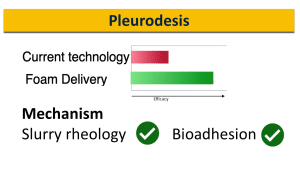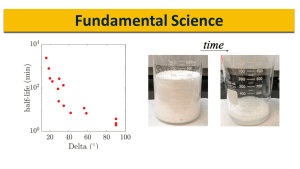Developing A New Drug-delivery System Using Foam
Foam can be used as a drug delivery method with an essential benefit that it requires less material to cover, or fill, large volumes. This has important applications for a drug delivery systems.

Looking at applications for the lungs, consider malignant pleural effusions, a common complication of lung cancers where fluid builds up between the lung and chest wall. This condition is treated using talc pleurodesis, but current delivery methods result in a poor distribution of talc inside the pleural cavity (space between chest wall and lung). Despite being a recognized treatment, this treatment has low efficacy. Using a foam delivery system, we achieved better distribution of talc in animal models, with a 2.2-fold greater efficacy than that of pure talc in normal saline.

Peptides that selectively target individual gut microbiome members were recently identified. Delivering such peptides can be challenging, however, due to potential degradation by proteases and the peptides’ inability to achieve high enough concentrations in the colon. To solve these problems, we are developing foams to use as a carrier of peptides.

In parallel to these foam applications, we are working on the correlation between the foamability and stability properties of foams. We are also studying the rheology of foam formulations.

